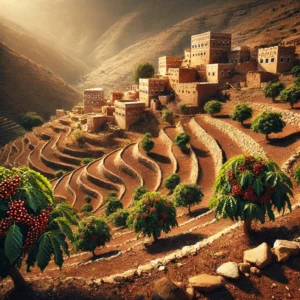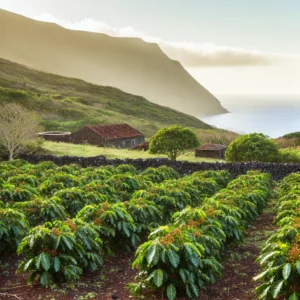Coffee, a beloved and widely consumed beverage, embarks on a fascinating journey from the coffee plant to our cups. This journey involves a meticulous process of cultivation, harvesting, processing, and roasting, all of which contribute to the distinct flavors and aromas found in different types of coffee. Understanding the diverse methods used to process coffee beans is essential for coffee enthusiasts to fully appreciate the nuances and complexities of each variety. In this article, we will explore the captivating journey of coffee, from the plantation to the cup, uncovering the secrets behind the processing techniques employed.
The cultivation and harvesting of coffee are vital initial stages in the process. Coffee plants, primarily Arabica and Robusta species, thrive in specific tropical climates with favorable sunlight and rainfall. Cultivating coffee involves nurturing seedlings until they mature into productive trees. Once the coffee cherries ripen, they are carefully harvested, ensuring that only the ripest cherries are selected.
Following the harvest, the coffee cherries undergo various processing methods to extract the coffee beans within. The dry process, also known as the natural process, involves sun-drying the cherries to remove the outer layers and expose the beans. This method enhances the fruitiness and sweetness of the coffee, resulting in a full-bodied and complex flavor profile. In contrast, the wet process, or washed process, involves removing the outer skin of the cherries through pulping, followed by fermentation to break down the remaining pulp. The beans are then thoroughly washed, resulting in a cleaner and brighter taste that highlights the coffee’s acidity and clarity.
Beyond these primary processing methods, there are additional techniques employed in specific regions to create unique coffee flavors. The honey process, for example, involves drying the cherries with some of the mucilage intact, imparting a distinct sweetness to the coffee. The semi-washed process combines elements of both the dry and wet processes, resulting in a flavor profile that balances sweetness and acidity.
Once the coffee beans have been processed, they undergo the transformative stage of roasting. Roasting involves subjecting the beans to controlled high temperatures, which leads to complex chemical reactions that develop the flavors, aromas, and colors. The duration and intensity of the roast significantly impact the final taste profile, with lighter roasts offering bright acidity and fruity notes, while darker roasts yield bolder and more robust flavors.
The journey concludes with the brewing stage, where the roasted coffee beans are transformed into a delightful cup of coffee. Different brewing methods, such as pour-over, espresso, French press, or cold brew, allow for customization and the extraction of various flavor profiles from the beans. Each brewing method brings forth unique characteristics, enabling coffee enthusiasts to tailor their brewing process to suit their preferences.
In conclusion, the journey of coffee from the plantation to the cup involves a meticulous and captivating process. Understanding the different methods employed in processing coffee beans provides a deeper appreciation for the diverse flavors and aromas found in various types of coffee. So, the next time you enjoy a cup of coffee, take a moment to savor the complexities it holds, and appreciate the remarkable journey it has undergone, from the hands of coffee farmers to the craftsmanship of roasters and baristas, all to deliver that perfect cup.
Cultivation and Harvesting
The journey of coffee begins on coffee plantations, typically located in regions with suitable climate and altitude. Coffee plants thrive in tropical climates, where they receive ample sunlight and rainfall. The two most common species of coffee plants are Arabica and Robusta, each with its distinct flavor profile.
Cultivation involves planting coffee seedlings, which take several years to mature and bear fruit. Once the coffee cherries ripen, they are carefully handpicked or harvested using machinery, depending on the scale of the plantation. Selective harvesting involves picking only the ripe cherries, ensuring optimal quality.
Processing Methods
After the cherries are harvested, they undergo various processing methods to remove the outer layers and extract the coffee beans. There are two primary methods used in coffee processing: the dry process (natural) and the wet process (washed).
Dry Process (Natural): In the dry process, the freshly harvested coffee cherries are spread out on large patios or raised beds to dry under the sun. As the cherries dry, they shrink, allowing the beans to be separated from the dried fruit. This process imparts distinct fruity and wine-like flavors to the beans, resulting in a sweeter and full-bodied cup of coffee.
Wet Process (Washed): The wet process involves pulping the cherries to remove the outer skin, leaving behind the mucilage-covered beans. The beans are then fermented in water tanks to break down the mucilage. After fermentation, the beans are thoroughly washed to remove any remaining residue. This method produces coffee with a cleaner and brighter flavor profile, often preferred for its acidity and clarity of taste.
Additional Processing Techniques
Apart from the dry and wet processes, there are other specialized processing techniques employed in certain regions to create distinct coffee flavors. These techniques include:
Honey Process: In the honey process, the outer skin of the coffee cherry is removed, but a portion of the sticky mucilage is left on the beans. This mucilage resembles honey in texture and color, hence the name. The beans are then dried, allowing them to absorb some of the sugars from the mucilage, resulting in a coffee with a sweet and complex flavor profile.
Semi-washed Process: The semi-washed process combines elements of both the dry and wet processes. The cherries are pulped to remove the outer skin, but the beans are not fermented. Instead, they are washed briefly to remove some of the mucilage. This method produces a coffee with balanced flavors, combining the sweetness of the natural process with the cleanliness of the washed process.
Roasting and Brewing
Once the coffee beans have been processed, they are ready for roasting. Roasting is a critical step that transforms the raw, green coffee beans into the aromatic and flavorful beans we are familiar with During the roasting process, the beans are subjected to high temperatures, causing chemical reactions that develop their flavors, aromas, and colors. The duration and temperature of the roast can greatly influence the final taste profile of the coffee.
Roasting is an art in itself, with different levels of roasts yielding different results. Light roasts are generally associated with brighter acidity and more pronounced fruity and floral notes. Medium roasts strike a balance between acidity and body, while dark roasts offer a bolder and fuller-bodied cup with smoky or chocolaty undertones.
Once the beans have been roasted, they are ready to be brewed into a delightful cup of coffee. Brewing methods vary widely, including techniques such as pour-over, French press, espresso, and more. Each brewing method extracts different flavors and characteristics from the coffee, allowing enthusiasts to tailor their brewing process to suit their personal preferences.
The Importance of Quality and Sustainability
Throughout the entire process, from cultivation to brewing, maintaining quality and sustainability is of paramount importance. Coffee farmers must adhere to ethical and sustainable practices to ensure the well-being of the environment, as well as the livelihoods of the people involved in the coffee industry. Fair trade and organic certifications play a crucial role in supporting responsible coffee production.
Additionally, the quality of the coffee beans greatly impacts the final cup. Factors such as the coffee variety, growing conditions, processing methods, and storage all contribute to the overall quality and flavor profile of the coffee. Specialty coffee, which is carefully sourced and roasted to bring out the unique characteristics of each coffee origin, has gained popularity among coffee enthusiasts seeking exceptional taste experiences.
Conclusion
The journey of coffee from the plantation to the cup is a remarkable process that involves careful cultivation, harvesting, processing, roasting, and brewing. Understanding the different processing methods, such as the dry process and wet process, allows us to appreciate the diverse flavors and characteristics that coffee can offer.
Roasting plays a crucial role in bringing out the flavors and aromas hidden within the coffee beans, while brewing methods allow for customization and personalization. Quality and sustainability are essential factors that ensure the long-term viability of the coffee industry and the enjoyment of exceptional coffee experiences.
Next time you sip on your favorite cup of coffee, take a moment to reflect on the intricate journey it has undertaken to reach your hands. From the meticulous work of coffee farmers to the craftsmanship of roasters and baristas, every step contributes to the magical experience of coffee. So, savor each sip, and celebrate the wonders of coffee, from the plantation to the cup.



